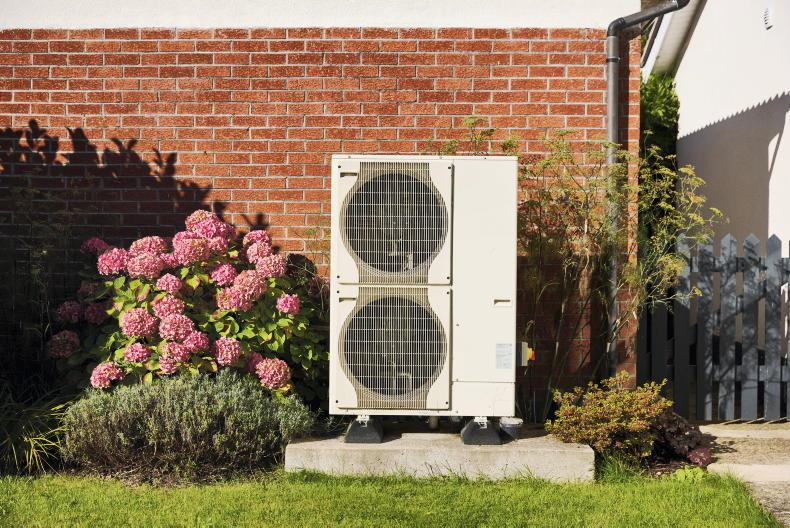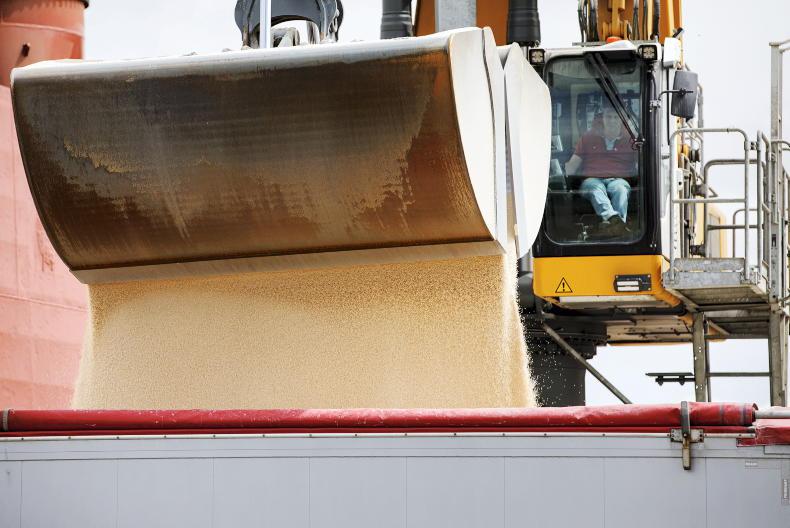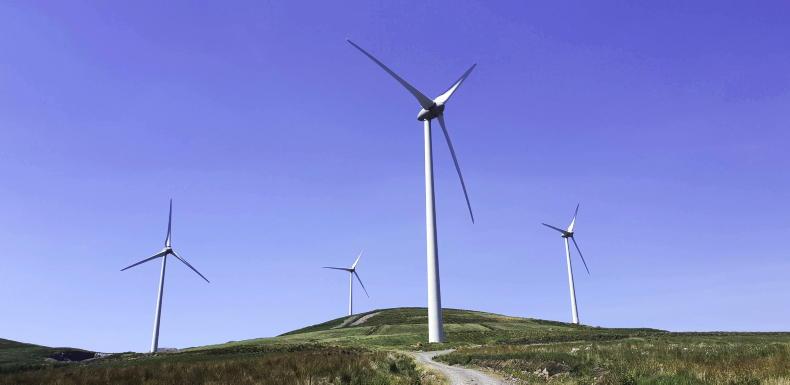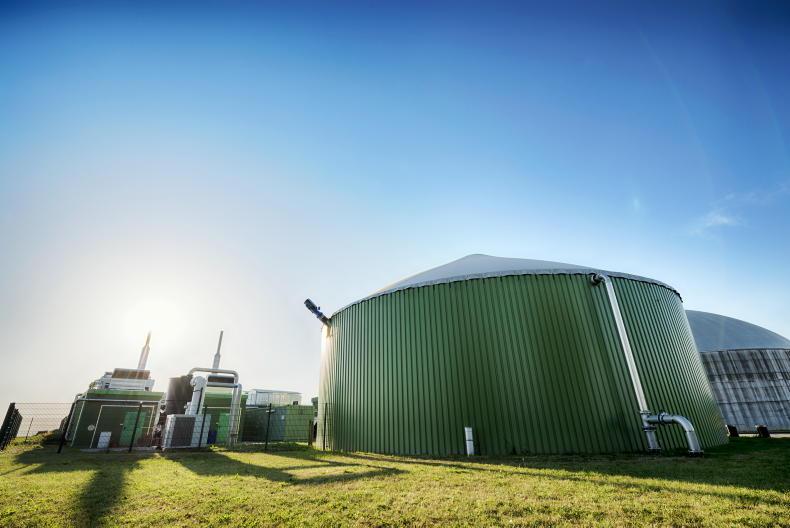Climate Action Plan; Chapter 14,
section 1.1, what is a retrofit?
A retrofit or home energy upgrade enhances
the energy performance of a home.
“If you are building a new house today, you must build it to reach a BER of A2, designed to be a constant 21°C when it’s -3°C outside,” engineer with Electric Ireland Superhomes, Shaun Finn, tells me. We are debriefing following the completion of a survey of our house to assess what retrofitting is required to move our home up the BER scale.

Shaun Finn is an engineer with Electric Ireland Superhomes.
The purpose of a retrofit is to decarbonise your home and reduce your need for energy as much as possible. The approach is “fabric first”; according to Shaun. Get the materials right first and then support that with a renewable heating system or solar PV or solar thermal to produce energy.
“For some, there is environmental guilt. They want to lower their emissions and for others it’s future proofing so the carbon tax is coming in, the price of oil is going to go up, the price of solid fuel is going to go up.”
Electric Ireland Super Homes survey
Electric Ireland Superhomes is what the Climate Action Plan refers to as a One-Stop-Shop (OSS) service in that they will take complete control of a retrofit project right down to the payment of grant funding.

The purpose of a retrofit is to decarbonise your home and reduce your need for energy as much as possible.
Shaun explains the process: “I take care of a project from survey to commissioning to handover. When a homeowner contacts us and makes an application online, we assess the suitability of the house. One of our advisers will make the initial contact.
“From this, they will be able to assess at a high level what the requirement is.
“Perhaps with a new-ish house, it only needs a few upgrades or it could be an older house that needs a more comprehensive retrofit,” Shaun explains.
This will dictate whether a full survey is required. If it is, an engineer will come to your home to gather data.
They will measure each room length, width, height and each window. This means that at a later date, if the homeowner decides to go with an air to water heat pump, for example, the engineer can complete full room-by-room heat loss calculations. Also, with the radiators measured, they will be able to assess the output and say which radiators need to be changed.
After the survey, the calculations are done at the desk.
The report will tell you where your home is now on the BER scale and what rating it would achieve after the works.
Suggested upgrades most likely to be included are wall and attic insulation, replacing windows and doors, addressing air tightness and ventilation and installing an efficient renewable heating system (such as a heat pump), as well as other renewable energy technologies (such as solar PV panels).
Old versus new
As mentioned, an A2 rating is a requirement for a new build. To achieve that with just an oil or gas boiler on its own, Shaun says, is not possible: “You’d usually need something like solar PV and a gas boiler or solar PV and oil or generally an air to water heat pump – some form of renewables.
New houses are one thing, but much of Ireland’s building stock is much older? We ask where these homeowners start.
The answer depends on what upgrades have been done over the years as, in some cases, a retrofit can be more difficult if there have been multiple upgrades in the 1950s, 1970s and 1990s as there might be a mix of construction types.
For this reason, Shaun says: “You don’t really want to disrupt them structurally but you are looking to fully insulate them as a box essentially, replacing windows and doors, air tightness, ventilation and renewable heating.”
With older houses as different materials were used in construction, retrofit materials – such as the type of insulation that you use – must complement the older structure and these materials can be more expensive.
Who is paying for all this?
Currently, grants are the only help towards the cost of retrofitting but Shaun is confident that sustainable finance options are on route.
“You will get your grant and then you get a low-cost loan towards the outstanding amount.
“You’ll also have significantly reduced bills so your monthly outgoings might not be that much different in the end.”
Grant funding is available for up to 35% of the qualifying measures (and qualifying homes) through the National Home Retrofit Scheme.
Where to next
The actions you can take to retrofit your home are not complicated in theory but the process of getting the survey done flagged up a lot of questions.
How will older people access loans and will the retrofit really reduce energy bills to maintain outgoings at the same level?
The report returned from Electric Ireland Superhomes revealed that our home is not eligible for any grant (must have been occupied prior to 2011) but there is circa €30k of retrofitting work to be carried out. What homes will benefit?
Who will do all this work with a shortage of skilled labour? To start your journey to a Superhome, complete the enquiry form at www.electricirelandsuperhomes.ie
We will be answering these questions and many others that have arisen since the publication of the Climate Action Plan in our new “Climate Conversations” series. We would like to hear your voice in this conversation too. Please get in touch www.ifj.ie/rural-climate
Read more
New report on creating a forest carbon code for Ireland
Letter: Ireland's ambitious climate action plan
Climate Action Plan; Chapter 14,
section 1.1, what is a retrofit?
A retrofit or home energy upgrade enhances
the energy performance of a home.
“If you are building a new house today, you must build it to reach a BER of A2, designed to be a constant 21°C when it’s -3°C outside,” engineer with Electric Ireland Superhomes, Shaun Finn, tells me. We are debriefing following the completion of a survey of our house to assess what retrofitting is required to move our home up the BER scale.

Shaun Finn is an engineer with Electric Ireland Superhomes.
The purpose of a retrofit is to decarbonise your home and reduce your need for energy as much as possible. The approach is “fabric first”; according to Shaun. Get the materials right first and then support that with a renewable heating system or solar PV or solar thermal to produce energy.
“For some, there is environmental guilt. They want to lower their emissions and for others it’s future proofing so the carbon tax is coming in, the price of oil is going to go up, the price of solid fuel is going to go up.”
Electric Ireland Super Homes survey
Electric Ireland Superhomes is what the Climate Action Plan refers to as a One-Stop-Shop (OSS) service in that they will take complete control of a retrofit project right down to the payment of grant funding.

The purpose of a retrofit is to decarbonise your home and reduce your need for energy as much as possible.
Shaun explains the process: “I take care of a project from survey to commissioning to handover. When a homeowner contacts us and makes an application online, we assess the suitability of the house. One of our advisers will make the initial contact.
“From this, they will be able to assess at a high level what the requirement is.
“Perhaps with a new-ish house, it only needs a few upgrades or it could be an older house that needs a more comprehensive retrofit,” Shaun explains.
This will dictate whether a full survey is required. If it is, an engineer will come to your home to gather data.
They will measure each room length, width, height and each window. This means that at a later date, if the homeowner decides to go with an air to water heat pump, for example, the engineer can complete full room-by-room heat loss calculations. Also, with the radiators measured, they will be able to assess the output and say which radiators need to be changed.
After the survey, the calculations are done at the desk.
The report will tell you where your home is now on the BER scale and what rating it would achieve after the works.
Suggested upgrades most likely to be included are wall and attic insulation, replacing windows and doors, addressing air tightness and ventilation and installing an efficient renewable heating system (such as a heat pump), as well as other renewable energy technologies (such as solar PV panels).
Old versus new
As mentioned, an A2 rating is a requirement for a new build. To achieve that with just an oil or gas boiler on its own, Shaun says, is not possible: “You’d usually need something like solar PV and a gas boiler or solar PV and oil or generally an air to water heat pump – some form of renewables.
New houses are one thing, but much of Ireland’s building stock is much older? We ask where these homeowners start.
The answer depends on what upgrades have been done over the years as, in some cases, a retrofit can be more difficult if there have been multiple upgrades in the 1950s, 1970s and 1990s as there might be a mix of construction types.
For this reason, Shaun says: “You don’t really want to disrupt them structurally but you are looking to fully insulate them as a box essentially, replacing windows and doors, air tightness, ventilation and renewable heating.”
With older houses as different materials were used in construction, retrofit materials – such as the type of insulation that you use – must complement the older structure and these materials can be more expensive.
Who is paying for all this?
Currently, grants are the only help towards the cost of retrofitting but Shaun is confident that sustainable finance options are on route.
“You will get your grant and then you get a low-cost loan towards the outstanding amount.
“You’ll also have significantly reduced bills so your monthly outgoings might not be that much different in the end.”
Grant funding is available for up to 35% of the qualifying measures (and qualifying homes) through the National Home Retrofit Scheme.
Where to next
The actions you can take to retrofit your home are not complicated in theory but the process of getting the survey done flagged up a lot of questions.
How will older people access loans and will the retrofit really reduce energy bills to maintain outgoings at the same level?
The report returned from Electric Ireland Superhomes revealed that our home is not eligible for any grant (must have been occupied prior to 2011) but there is circa €30k of retrofitting work to be carried out. What homes will benefit?
Who will do all this work with a shortage of skilled labour? To start your journey to a Superhome, complete the enquiry form at www.electricirelandsuperhomes.ie
We will be answering these questions and many others that have arisen since the publication of the Climate Action Plan in our new “Climate Conversations” series. We would like to hear your voice in this conversation too. Please get in touch www.ifj.ie/rural-climate
Read more
New report on creating a forest carbon code for Ireland
Letter: Ireland's ambitious climate action plan












SHARING OPTIONS